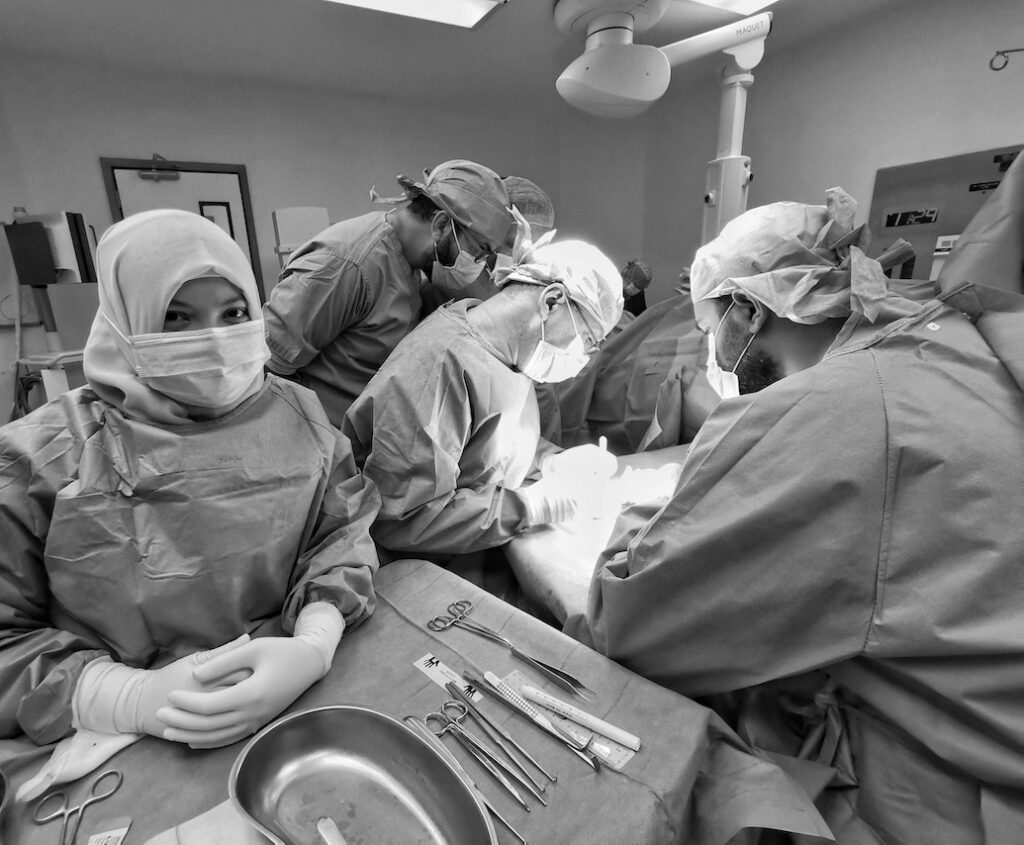Meniscus surgery is a common procedure that is performed to repair or remove a torn meniscus in the knee. The meniscus is a piece of cartilage that acts as a cushion between the thighbone and the shinbone. It can be torn due to a sudden twist or turn of the knee, or as a result of wear and tear over time. Meniscus surgery cost can vary depending on a number of factors.
Understanding the cost factors of meniscus surgery is important for patients who are considering the procedure. The cost of meniscus surgery can vary based on the geographic location of the procedure, the type of facility where it is performed, and the experience of the surgeon. Additionally, the type of procedure performed can impact the cost. For example, a partial meniscectomy may be less expensive than a meniscus repair. Patients should discuss the cost of the procedure with their surgeon and their insurance provider to ensure they have a clear understanding of the expected cost and any potential out-of-pocket expenses.
Key Takeaways
- Meniscus surgery is a common procedure used to repair or remove a torn meniscus in the knee.
- The cost of meniscus surgery can vary based on geographic location, type of facility, surgeon experience, and type of procedure performed.
- Patients should discuss the cost of the procedure with their surgeon and insurance provider to understand the expected cost and potential out-of-pocket expenses.
Understanding Meniscus Surgery
Meniscus surgery is a common surgical procedure that aims to repair or remove damaged menisci in the knee joint. The menisci are two C-shaped pieces of cartilage that sit between the femur (thigh bone) and tibia (shin bone) in the knee joint. They act as shock absorbers and help distribute weight evenly across the joint.
A torn meniscus is a common injury that can occur during sports or other physical activities. Symptoms of a torn meniscus include pain, swelling, stiffness, and difficulty moving the knee. In some cases, a torn meniscus can be repaired through surgical repair. In other cases, the damaged portion of the meniscus may need to be removed through a partial or total meniscectomy.
Meniscus surgery is typically performed using an arthroscopic procedure, which involves making small incisions in the knee and using a camera and small instruments to repair or remove the damaged meniscus. The surgery is usually performed on an outpatient basis, meaning the patient can go home the same day as the surgery.
The cost of meniscus surgery can vary depending on a number of factors, including the type of surgery, the location of the surgery, and the surgeon performing the procedure. In general, the cost of meniscus surgery can range from several thousand dollars to tens of thousands of dollars.
It is important to note that meniscus surgery is not always necessary for a torn meniscus. In some cases, conservative treatments such as rest, ice, compression, and elevation (RICE) and physical therapy may be sufficient to manage symptoms and allow the meniscus to heal on its own. It is important to discuss all treatment options with a qualified healthcare provider before making a decision about meniscus surgery.
The Anatomy of the Knee
The knee is a complex joint that connects the thigh bone (femur) to the shin bone (tibia). It is made up of several components, including bones, cartilage, ligaments, tendons, and muscles. The knee joint is responsible for supporting the weight of the body and allowing for movement, such as walking, running, and jumping.
The knee joint is protected by a layer of cartilage, which acts as a cushion between the bones and helps to absorb shock. The cartilage in the knee is known as the meniscus, and there are two menisci in each knee joint. The medial meniscus is located on the inside of the knee, while the lateral meniscus is located on the outside.
In addition to the menisci, there are also several ligaments in the knee joint that help to provide stability. The anterior cruciate ligament (ACL) and the posterior cruciate ligament (PCL) are located inside the knee joint and help to prevent the bones from sliding back and forth. The medial collateral ligament (MCL) and the lateral collateral ligament (LCL) are located on the sides of the knee joint and help to prevent the knee from bending too far in either direction.
When a person experiences knee pain or injury, it can be caused by a variety of factors, including damage to the meniscus, ligament sprains or tears, or arthritis. Treatment options for knee pain may include rest, physical therapy, knee braces, or surgery, depending on the severity of the injury.
One common surgical procedure for knee injuries is arthroscopic knee surgery, which involves using a small camera and surgical tools to repair or remove damaged tissue. In some cases, knee replacement surgery may be necessary to replace a damaged knee joint with an artificial joint.
Identifying a Torn Meniscus
A torn meniscus is a common injury among athletes and active individuals, but it can also occur due to aging or degeneration. The meniscus is a crescent-shaped piece of cartilage that acts as a cushion between the thighbone and shinbone. When this cartilage tears, it can cause pain, swelling, and limited mobility.
There are several ways to identify a torn meniscus. The most common symptoms include pain, swelling, and stiffness in the knee joint. The pain may be sharp or dull and is often felt along the joint line. Swelling may occur immediately after the injury or may develop gradually over time. Stiffness can make it difficult to fully extend or bend the knee.
A physical exam can help diagnose a torn meniscus. The doctor may perform a series of tests to assess the range of motion, stability, and strength of the knee joint. The doctor may also look for signs of swelling, tenderness, and bruising.
Imaging tests such as X-rays and MRIs may be used to confirm the diagnosis. X-rays can help rule out other conditions such as a fracture or arthritis, while an MRI can provide a detailed image of the soft tissues in the knee joint, including the meniscus.
Sports injuries are a common cause of torn meniscus. Activities that involve twisting or pivoting motions, such as basketball or soccer, can put stress on the knee joint and increase the risk of injury. However, a torn meniscus can also occur due to degeneration over time, especially in older adults.
In conclusion, identifying a torn meniscus requires a combination of physical examination and imaging tests. Symptoms such as pain, swelling, and stiffness in the knee joint can indicate a torn meniscus. Sports injuries and aging are common causes of this injury.
Treatment Options for a Torn Meniscus
When it comes to treating a torn meniscus, there are several options available. The right treatment option for an individual depends on various factors such as the severity of the tear, the age and activity level of the person, and the presence of any other underlying medical conditions.
Rest, Ice, Compression, and Elevation (RICE)
For minor meniscus tears, doctors may recommend the RICE method. This involves resting the affected knee, applying ice to the area, compressing the knee with an elastic bandage, and elevating the leg. This treatment can help reduce inflammation and pain and promote healing.
Physical Therapy
Physical therapy is another option for treating a torn meniscus. A physical therapist can help individuals perform exercises that can strengthen the muscles around the knee joint, improve range of motion, and reduce pain and inflammation.
Braces and Range of Motion Exercises
In some cases, a brace may be prescribed to help support the knee joint and promote healing. Range of motion exercises may also be recommended to help improve flexibility and reduce stiffness.
Medications
Pain relievers such as acetaminophen and nonsteroidal anti-inflammatory drugs (NSAIDs) such as ibuprofen can help reduce pain and inflammation associated with a torn meniscus. In some cases, cortisone or steroid injections may also be prescribed to reduce inflammation and pain.
Meniscectomy
For more severe cases of a torn meniscus, surgery may be necessary. A meniscectomy involves removing the damaged part of the meniscus. This can be done through arthroscopic surgery, which is less invasive than traditional open surgery.
Overall, the right treatment option for a torn meniscus depends on various factors and should be determined by a medical professional. With the right treatment, most people can recover from a torn meniscus and return to their normal activities.
The Surgical Procedure
Meniscus surgery is a surgical procedure that is performed to repair or remove a damaged meniscus in the knee joint. The surgery is usually performed using an arthroscope, which is a type of surgical instrument that allows the surgeon to see inside the joint without making large incisions.
The surgical procedure usually takes about an hour to complete and is performed under general anesthesia. The anesthesiologist will administer the anesthesia and monitor the patient’s vital signs throughout the procedure.
During the surgery, the surgeon will make a small incision in the knee and insert the arthroscope. The arthroscope is equipped with a camera that allows the surgeon to see inside the joint. The surgeon will then use other surgical instruments to repair or remove the damaged meniscus.
If the meniscus can be repaired, the surgeon will use sutures to sew the torn edges of the meniscus back together. If the meniscus cannot be repaired, the surgeon will remove the damaged portion of the meniscus using surgical instruments.
After the surgery, the patient will be taken to a recovery room where they will be monitored as they wake up from the anesthesia. The patient will then be moved to a hospital room or discharged home, depending on the surgeon’s recommendations.
In summary, meniscus surgery is a surgical procedure that is performed using an arthroscope to repair or remove a damaged meniscus in the knee joint. The surgery is performed under general anesthesia and usually takes about an hour to complete. The surgeon will use surgical instruments to repair or remove the damaged meniscus, and the patient will be monitored in a recovery room after the surgery.
Potential Complications and Risks
Meniscus surgery is generally considered a safe procedure. However, like any surgery, there are potential complications and risks involved. It is important for patients to be aware of these risks before undergoing the surgery.
Complications
Complications are rare but can occur during or after the surgery. Some of the potential complications include:
- Infection
- Blood clot
- Inflammation
Risks
There are some risks involved with meniscus surgery. These risks include:
- Nerve damage
- Blood vessel damage
- Knee stiffness
- Knee weakness
- Knee instability
In some cases, the surgery may not be successful and the patient may require additional surgery.
Infection
Infection is a potential complication of any surgery. The risk of infection can be reduced by taking antibiotics before and after the surgery.
Blood Clot
Blood clots can form in the legs after surgery. This can be prevented by keeping the legs elevated and moving around as soon as possible after the surgery.
Inflammation
Inflammation is a common side effect after meniscus surgery. This can be managed with ice, rest, and anti-inflammatory medication.
It is important for patients to discuss these potential complications and risks with their doctor before undergoing meniscus surgery. By being aware of these risks, patients can make an informed decision about whether or not to proceed with the surgery.
Recovery After Surgery
After meniscus surgery, the recovery process is crucial for the patient’s overall outcome. The recovery time can vary depending on the severity of the injury and the type of surgery performed. Generally, patients can expect to be on crutches for a few days and experience some pain and swelling for the first few weeks.
Ice is an essential component of the recovery process. Patients are advised to ice their knee for 20-30 minutes every 2-3 hours for the first few days after surgery. This helps to reduce swelling and pain. Patients can use a bag of ice or a cold pack wrapped in a towel.
Patients may experience pain after surgery, which can be managed with pain medication prescribed by the doctor. Anti-inflammatory medications can also be used to reduce swelling and pain.
Patients may need to wear a cast or brace for a few weeks after surgery to provide stability to the knee joint. This helps to prevent further injury and promote healing. The doctor will advise the patient on how long they need to wear the cast or brace.
Joint stiffness is common after surgery, and patients are advised to perform physical therapy exercises to improve mobility. The physical therapist will guide the patient through exercises to help regain strength and flexibility in the knee joint.
Overall, recovery after meniscus surgery can take several weeks to several months. Patients are advised to follow the doctor’s instructions carefully to ensure a successful recovery.
Cost Factors of Meniscus Surgery
The cost of meniscus surgery can vary depending on a variety of factors. Some of the key factors that can impact the cost of meniscus surgery include:
Type of Surgery
The type of meniscus surgery being performed can have a significant impact on the cost. For example, a simple meniscus repair surgery may cost less than a more complex meniscus transplant surgery.
Location
The location where the surgery is performed can also impact the cost. In general, larger cities and more prestigious medical facilities may charge more for meniscus surgery than smaller, less well-known facilities.
Insurance Coverage
The cost of meniscus surgery may also be impacted by insurance coverage. Some insurance plans may cover the entire cost of the surgery, while others may require the patient to pay a copay or cover some of the out-of-pocket costs.
Out-of-Pocket Costs
Even with insurance coverage, patients may still be responsible for some out-of-pocket costs. These costs can include deductibles, copays, and coinsurance.
Surgeon Experience
The experience of the surgeon performing the meniscus surgery can also play a role in the cost. Surgeons with more experience and a higher level of expertise may charge more for their services.
In general, the cost of meniscus surgery can range from a few thousand dollars to tens of thousands of dollars. Patients should carefully consider their insurance coverage and out-of-pocket costs when deciding on the best course of treatment for their meniscus injury.
The Role of Hospitals and Surgery Centers
Hospitals and surgery centers play a crucial role in meniscus surgery cost. These entities provide the necessary facilities, equipment, and personnel to perform the surgery. They also provide post-operative care and support to patients.
Hospitals are often the preferred choice for meniscus surgery due to their extensive resources and expertise. They have a wide range of medical specialists, including orthopedic surgeons, anesthesiologists, and nurses, who can provide comprehensive care to patients. Hospitals also have state-of-the-art equipment and facilities, which can be essential for complex surgical procedures.
Surgery centers, on the other hand, are smaller facilities that specialize in outpatient procedures. They are often less expensive than hospitals and can provide a more personalized experience for patients. Surgery centers are a popular choice for meniscus surgery because they can offer a more cost-effective option without sacrificing quality of care.
Overall, the choice between a hospital and a surgery center will depend on the individual patient’s needs and preferences. Patients should consult with their healthcare provider to determine which option is best for them. It is also important to consider the cost of the surgery, as well as any insurance coverage or financial assistance that may be available.
Meniscus Surgery in Different Locations
The cost of meniscus surgery varies depending on the location. Here is a breakdown of the average costs of meniscus surgery in different locations:
India
India is a popular destination for medical tourism due to its affordable healthcare costs. The average cost of meniscus surgery in India is around $1,500 to $2,000.
Mexico
Mexico is another popular destination for medical tourism. The average cost of meniscus surgery in Mexico is around $3,000 to $4,000.
Florida
The average cost of meniscus surgery in Florida is around $8,000 to $10,000. However, the cost may vary depending on the hospital and surgeon.
New York
The average cost of meniscus surgery in New York is around $10,000 to $15,000. However, the cost may vary depending on the hospital and surgeon.
North Carolina
The average cost of meniscus surgery in North Carolina is around $5,000 to $7,000. However, the cost may vary depending on the hospital and surgeon.
Ohio
The average cost of meniscus surgery in Ohio is around $5,000 to $7,000. However, the cost may vary depending on the hospital and surgeon.
Pennsylvania
The average cost of meniscus surgery in Pennsylvania is around $5,000 to $7,000. However, the cost may vary depending on the hospital and surgeon.
Washington
The average cost of meniscus surgery in Washington is around $8,000 to $10,000. However, the cost may vary depending on the hospital and surgeon.
It’s important to note that these prices are just averages and may vary depending on the individual case and the hospital and surgeon chosen. Patients should always consult with their healthcare provider to determine the best course of treatment and associated costs.
Meniscus Surgery in Different Age Groups
Meniscus surgery is a common procedure that is used to treat various knee injuries. The cost of meniscus surgery can vary depending on a number of factors, including the age of the patient. In this section, we will take a closer look at meniscus surgery in different age groups.
Younger Patients
Younger patients, typically under the age of 40, are more likely to experience meniscus tears due to traumatic injuries. These types of injuries can occur during sports or other physical activities. In many cases, meniscus surgery is necessary to repair the tear and prevent further damage to the knee.
Middle-Aged Patients
Middle-aged patients, typically between the ages of 40 and 60, may experience meniscus tears due to a combination of factors, including aging and wear and tear on the knee joint. These patients may also be more likely to have arthritis in the knee, which can contribute to meniscus tears. In some cases, meniscus surgery may be necessary to alleviate pain and improve mobility.
Older Patients
Older patients, typically over the age of 60, are more likely to experience meniscus tears due to degenerative changes in the knee joint. These patients may also have osteoarthritis, which can contribute to meniscus tears. Meniscus surgery may be necessary to alleviate pain and improve mobility in these patients.
In conclusion, meniscus surgery is a common procedure that can be used to treat a variety of knee injuries. The cost of meniscus surgery can vary depending on a number of factors, including the age of the patient. It is important for patients to discuss their options with a qualified healthcare professional to determine the best course of treatment for their individual needs.
Meniscus Surgery in Athletes
Meniscus tears are common injuries in athletes, especially those who participate in sports that involve cutting, pivoting, and sudden stops and starts. When conservative treatment options fail, meniscus surgery may be necessary to repair or remove the damaged tissue.
The cost of meniscus surgery can vary depending on several factors, including the severity of the injury, the type of surgery performed, and the location of the surgery. In general, meniscus surgery can be expensive, with costs ranging from $5,000 to $25,000 or more.
Athletes who require meniscus surgery may face additional costs related to their recovery, including physical therapy, rehabilitation, and time away from their sport. These costs can add up quickly, especially for athletes who rely on their sport for income or scholarships.
Despite the high cost of meniscus surgery, many athletes choose to undergo the procedure in order to return to their sport as quickly as possible. While surgery is not always necessary for meniscus tears, it can be the best option for athletes who want to minimize their time away from their sport and maximize their chances of a full recovery.
It is important for athletes to weigh the potential benefits and risks of meniscus surgery before making a decision. While surgery can be effective in treating meniscus tears, it is not without risks, including infection, blood clots, and nerve damage. Athletes should discuss their options with a qualified orthopedic surgeon and consider all of the factors involved before making a decision.
Success Rate of Meniscus Surgery
Meniscus surgery is a common procedure used to treat meniscus tears, which are common knee injuries. The success rate of meniscus surgery varies depending on the type of surgery performed, the extent of the injury, and the patient’s overall health.
Studies have shown that the success rate of meniscus surgery is generally high. A study published in the Journal of Bone and Joint Surgery found that the success rate of meniscus surgery was over 80% for patients with degenerative meniscus tears. Another study published in the American Journal of Sports Medicine found that the success rate of meniscus surgery was over 90% for patients with traumatic meniscus tears.
However, it is important to note that the success rate of meniscus surgery can vary depending on the individual case. Factors such as age, activity level, and overall health can all impact the success of the surgery.
In addition, there are different types of meniscus surgery that can be performed, including partial meniscectomy, meniscus repair, and meniscus replacement. The success rate of each type of surgery can vary, and the surgeon will determine which type of surgery is most appropriate for the patient’s individual case.
Overall, the success rate of meniscus surgery is generally high, but it is important for patients to discuss their individual case with their surgeon to determine the best course of treatment.
Alternatives to Meniscus Surgery
While meniscus surgery is a common treatment for meniscus tears, it is not always necessary. Depending on the severity of the tear and the patient’s overall health, there may be alternative treatments that can be just as effective.
One alternative to meniscus surgery is physical therapy. Physical therapy can help strengthen the muscles around the knee joint, which can help to support the knee and reduce pain. Physical therapists can also provide exercises to improve range of motion and flexibility, which can help to prevent future injuries.
Another alternative to meniscus surgery is the use of a brace. A brace can help to support the knee joint and reduce pain, especially during physical activity. Braces come in a variety of styles and can be customized to fit the patient’s specific needs.
In some cases, exercises at home can also be effective in treating meniscus tears. Exercises such as leg raises, hamstring curls, and calf raises can help to strengthen the muscles around the knee joint, which can help to support the knee and reduce pain.
It is important to note that not all meniscus tears require surgery. In fact, many tears can heal on their own with the help of rest, ice, and physical therapy. It is important to consult with a healthcare professional to determine the best course of treatment for each individual case.
Frequently Asked Questions
What is the average cost of arthroscopic knee surgery with insurance?
The cost of arthroscopic knee surgery with insurance can vary depending on the insurance provider and the specific plan. On average, patients can expect to pay anywhere from $1,000 to $5,000 out of pocket for this procedure.
How much does arthroscopic knee surgery cost without insurance?
Without insurance, arthroscopic knee surgery can cost anywhere from $6,000 to $25,000 or more. The final cost will depend on various factors, such as the surgeon’s fees, the location of the surgery, and any additional procedures that may be required.
At what age is meniscus surgery no longer an option?
There is no specific age at which meniscus surgery becomes no longer an option. However, older patients may have a higher risk of complications and slower recovery times. Surgeons may take these factors into consideration when evaluating a patient’s candidacy for surgery.
What is the average cost of meniscus surgery in the United States?
The average cost of meniscus surgery in the United States can range from $5,000 to $25,000 or more. The final cost will depend on various factors, such as the surgeon’s fees, the location of the surgery, and any additional procedures that may be required.
How much does meniscus surgery cost in Texas?
The cost of meniscus surgery in Texas can vary depending on the specific location and surgeon. On average, patients can expect to pay anywhere from $5,000 to $20,000 or more for this procedure.
What are the risks associated with meniscus repair surgery?
As with any surgical procedure, there are risks associated with meniscus repair surgery. These may include infection, bleeding, blood clots, nerve damage, and adverse reactions to anesthesia. Patients should discuss these risks with their surgeon before undergoing the procedure.





